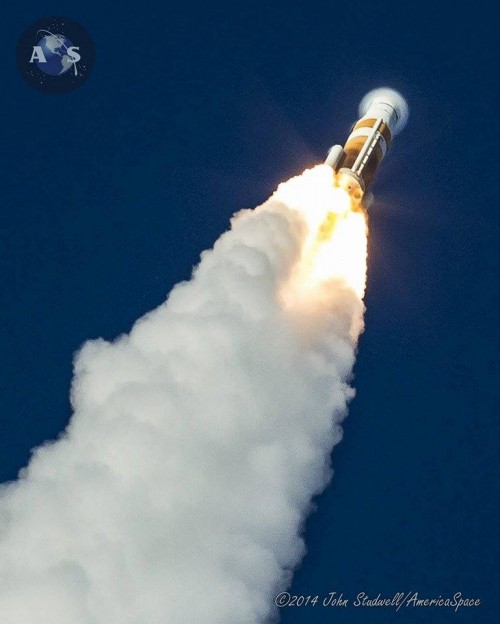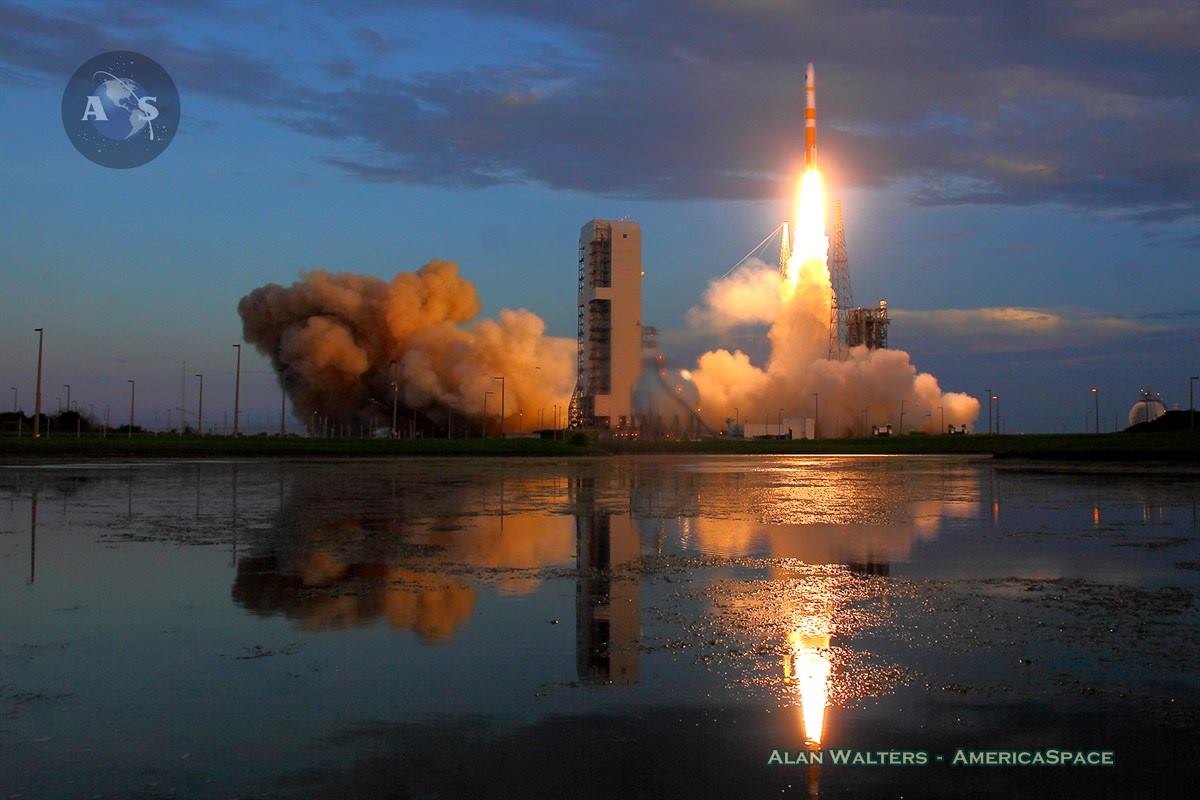
For the final time on Thursday, a “single-stick” Delta IV Medium booster will roar aloft from Space Launch Complex (SLC)-37B at Cape Canaveral Air Force Station, Fla., to transport a critical payload safely into orbit. It will be the 40th flight by a member of this venerable orange-and-white rocket family since November 2002 and the 15th outing in its “Medium+ (4,2)” configuration—characterized by a 13-foot-wide (4-meter) payload fairing and the presence of two solid-fueled Graphite Epoxy Motors (GEM)-60—and promises to put on quite a show for the Space Coast.
Launch is scheduled to occur during a 27-minute “window”, which opens at 9 a.m. EDT. Onboard the mighty Delta IV is the second Block III Global Positioning System (GPS) satellite, flying only a matter of months since SpaceX delivered GPS Block III-01 smoothly to orbit in October 2018.
FOLLOW OUR LAUNCH TRACKER FOR UPDATES AND LIVE COVERAGE ON LAUNCH DAY!
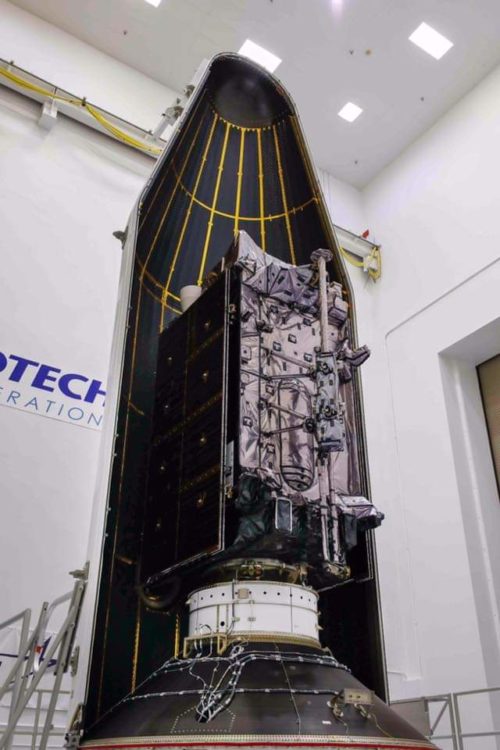
By a strange quirk, Thursday’s last mission by a single-stick Delta IV will fly in exactly the same configuration as was utilized by the very first Delta IV, launched way back in November 2002 to deliver the Eutelsat W5 communications satellite to geostationary altitude. The Medium+ (4,2) flew another dozen times—carrying reconnaissance satellites, weather satellites and a half-dozen GPS Block II satellites—until its 14th and most recent mission in August 2016 which orbited the classified AFSPC-6 payload for Air Force Space Command.
When one looks at the numbers, the Medium+ (4,2) is by far the most-flown member of the Delta IV Medium fleet, although its siblings have carved their own impressive niches in space history. The Delta IV Medium, with no strap-on boosters, flew three times in its career, whilst the Medium+ (5,2) and Medium+ (5,4) logged 11 missions between them; the former retired in January 2018, the latter in March of this year.

“ULA made the decision to retire the Delta IV Medium launch vehicle when our National Security Space customer decided to compete missions in 2015,” said Tony Taliancich, ULA director and general manager of launch operations, in comments provided earlier this year to AmericaSpace. “Prior to the acquisition strategy change, ULA was required by the government to maintain two families of launch vehicles to meet assured access to space policy requirements. In a competitive environment, ULA must favor its lowest-cost product to meet the market requirements. Maintaining multiple product lines would lead to lower launch rates and higher costs.”
As detailed previously by AmericaSpace, the retirement of the single-stick Delta IV fleet leaves United Launch Alliance (ULA) with the gigantic Delta IV Heavy as the sole remaining member of its Delta fleet, together with the Atlas V rocket line and the Vulcan-Centaur heavylifter, which is waiting in the wings for a maiden voyage no sooner than June 2021.
“ULA expects that flying-out the Delta IV Medium and transitioning to Vulcan-Centaur will provide the lowest-cost, most reliable support for our launch customers,” added Mr. Taliancich. “ULA will continue flying the Delta IV Heavy launch vehicle as long as it is required by our customers. Once transitioned to Vulcan, we will be able to provide a single-stick Vulcan that can meet Delta IV Heavy mission requirements at a lower price.” Current planning envisages approximately one Heavy launch per annum, through 2024.
Primary payload for Thursday’s Delta IV Medium swansong is the second Block III GPS—alphanumerically designated “GPS III-02”—which is part of a next-generation constellation of global positioning, velocity and timing satellites, bound for Medium Earth Orbit (MEO). The Air Force awarded a $1.4 billion contract to Lockheed Martin back in May 2008 to develop Block III, which is anticipated to eventually comprise up to 32 satellites, launched through 2034. However, the program’s inaugural launch last October was five years later than originally planned, due to ongoing payload problems.
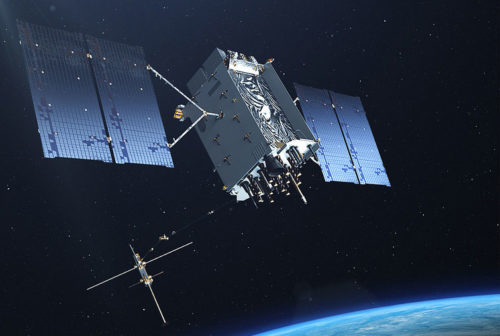
The Block III is the most capable Global Positioning System (GPS) network to date. Image Credit: Lockheed Martin
Following the May 2008 contract award, the GPS Block III program completed its Critical Design Review (CDR) phase in August 2010, which validated its design to ensure it would meet its advertised requirements, and a delta Preliminary Design Review (dPDR) in April 2013 addressed design modifications—including a search-and-rescue payload and Laser Retroreflector Array (LRA)—for later members of the Block III network.
By June 2017, the system module, propulsion core and antenna deck of GPS III-02 was structurally assembled and began an extensive series of environmental and acoustic tests, which was successfully concluded the following September. This involved pummeling the satellite with 140 decibels from high-powered horns, sufficient to shake anything loose which was not properly attached, and Thermal Vacuum (TVAC) testing was wrapped up later that fall. In August 2018, the Air Force declared the GPS III-02 was “Available for Launch” and on 18 March of this year the satellite was shipped aboard a C-17 Globemaster III heavylift aircraft from Buckley Air Force Base in Aurora, Colo., to Cape Canaveral for launch. On 26 June, GPS III-02 was encapsulated inside the 13-foot-wide (4-meter) payload fairing. The payload was moved to the SLC-37B pad surface and installed atop the Delta IV Medium+ (4,2) in the small hours of 2 August, ahead of a tip-to-tail Integrated Systems Test (IST) of the entire vehicle.
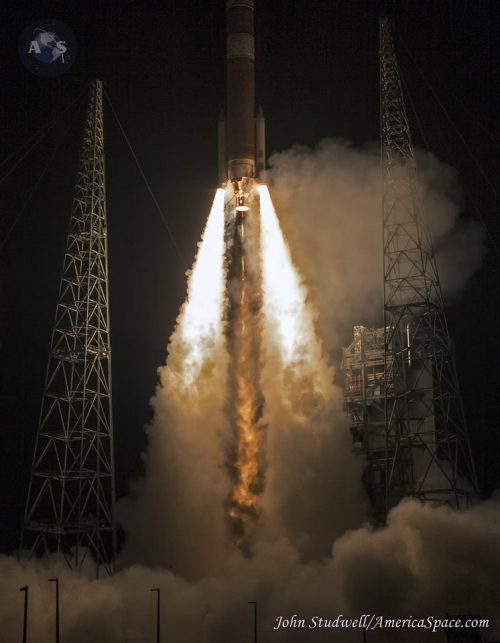
The most recent Delta IV Medium+ (4,2) launches the AFSPC-6 payload for Air Force Space Command in August 2016. Photo Credit: John Studwell/AmericaSpace
With 500 times the transmitting power of current GPS systems, Block III benefits from improved navigational warfare capabilities, with three times better accuracy and eight times better anti-jamming functionality. This enables the satellites to shut off GPS service to limited geographical locations, whilst maintaining uninterrupted provision for U.S. and allied forces. Block III features a cross-linked command and control architecture, which allows the entire constellation to be updated from a single ground station. Furthermore, the new satellites will showcase a new spot-beam capability for enhanced military (“M-Code”) coverage and increased resistance to hostil jamming. All told, these enhancements are expected to produce improved accuracy and assured availability for military and civilian users worldwide.
Based upon Lockheed Martin’s tried-and-true A2100 “bus”, whose modular framework can supply 15 kilowatts of electrical power via high-efficiency solar cells, radiation-cooled traveling-wave-tube assemblies and improved heat-pipe design, each GPS Block III weighs around 8,500 pounds (3,900 kg). The A2100’s 15-year operational life span represents a 25-percent leap over the GPS IIF satellites currently aloft.
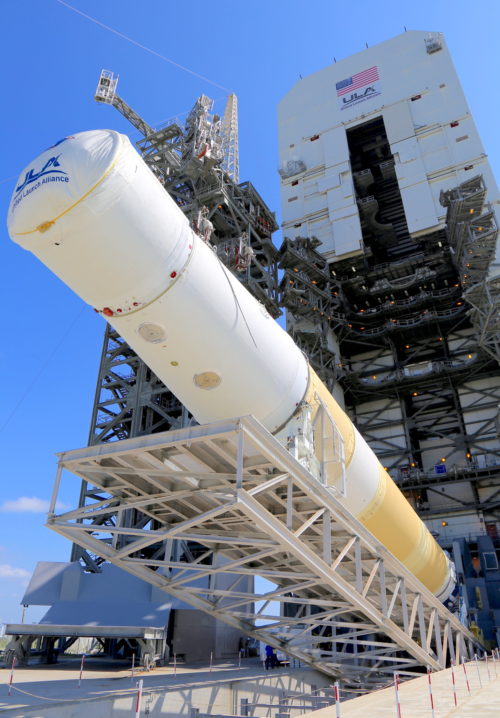
Last December’s GPS III-01 was nicknamed “Vespucci”, in honor of the 15th-century Italian explorer, cartographer and navigator Amerigo Vespucci. In keeping with tradition, GPS III-02 will be named for Ferdinand Magellan, the Portuguese explorer who first circumnavigated the globe in the early 16th century. “As we prepare to launch this second GPS III satellite, we acknowledge a major transition of the GPS III program into a production program,” said Col. Steve Whitney, director of the GPS Directorate. “Having successfully launched our “Satellite of Firsts”, Vespucci, last December, we now look forward to a more regular pace of launches with this one and several more just on the horizon, as we continue to uphold the Gold Standard in space based position, navigation and timing.”
Looking ahead, GPS III-03 is slated to fly atop a SpaceX Upgraded Falcon 9, later this year. This third Block III satellite was completed in November 2017 and sailed smoothly through environmental and TVAC testing in June of last year.
BELOW – Some of our favorite Delta IV Medium launch shots captured by our Photography team over the years, all rights reserved.
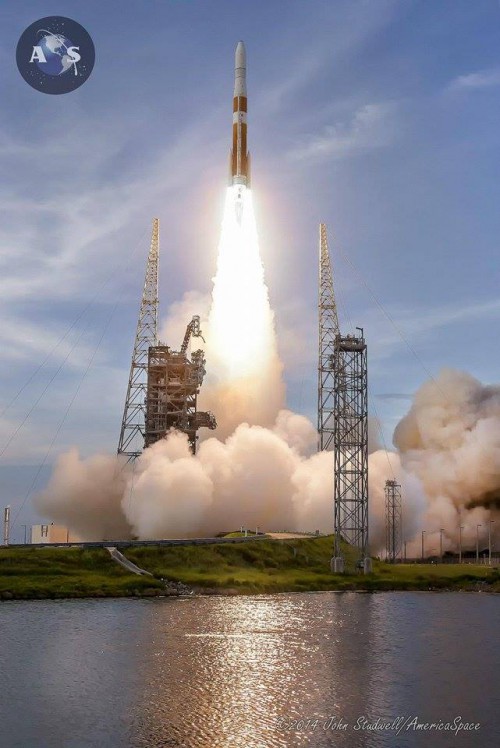
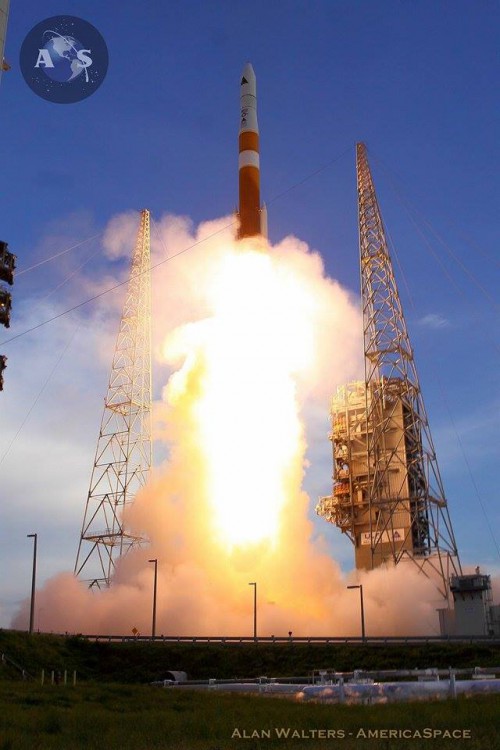
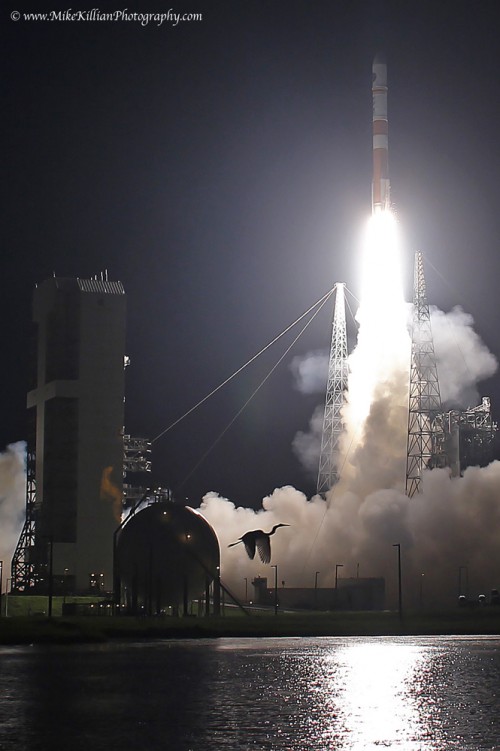
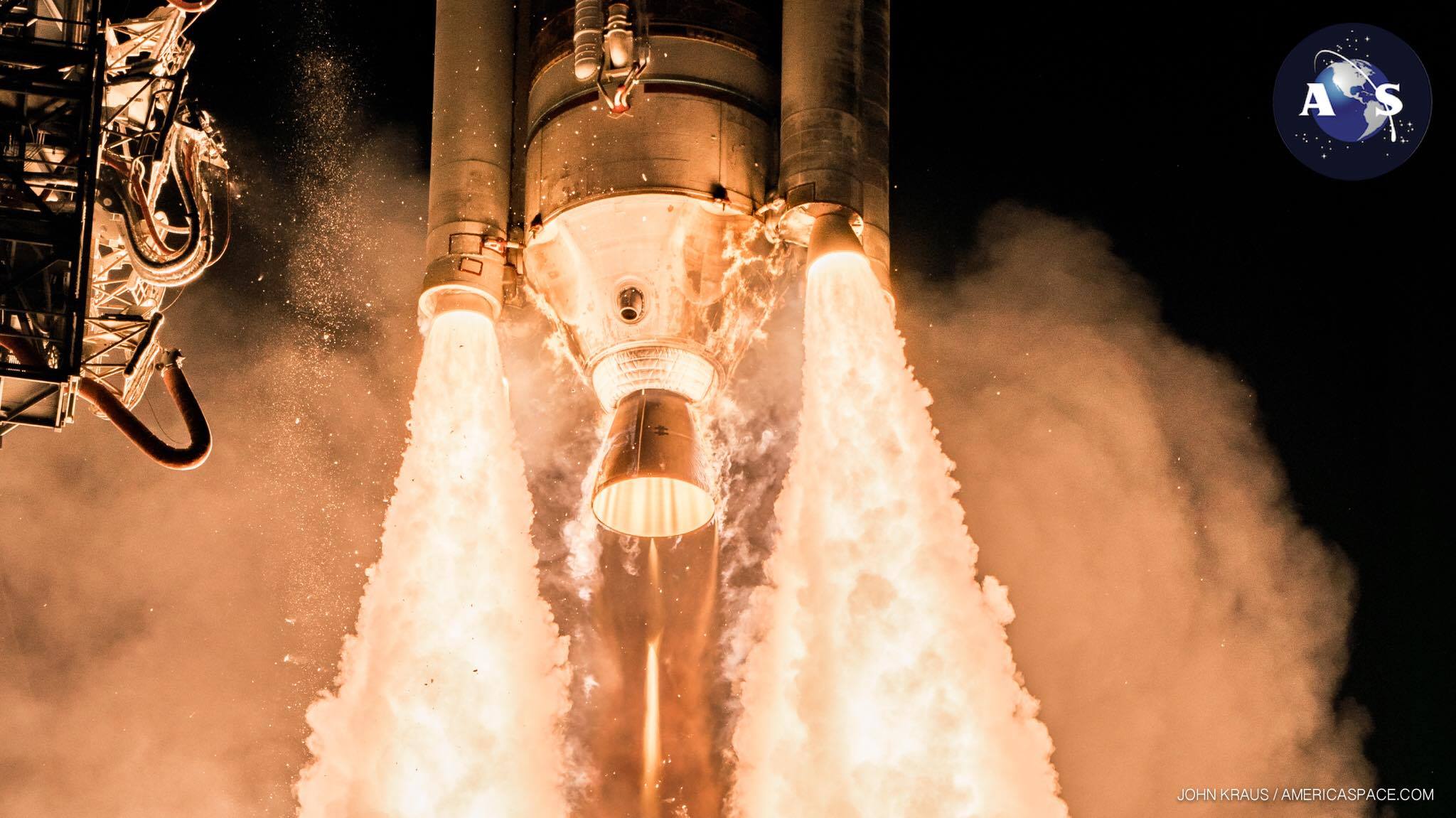
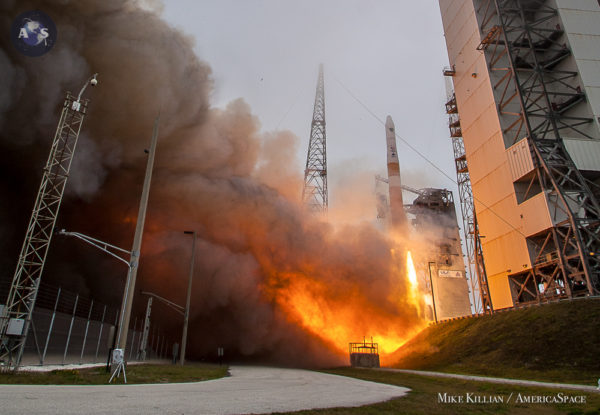
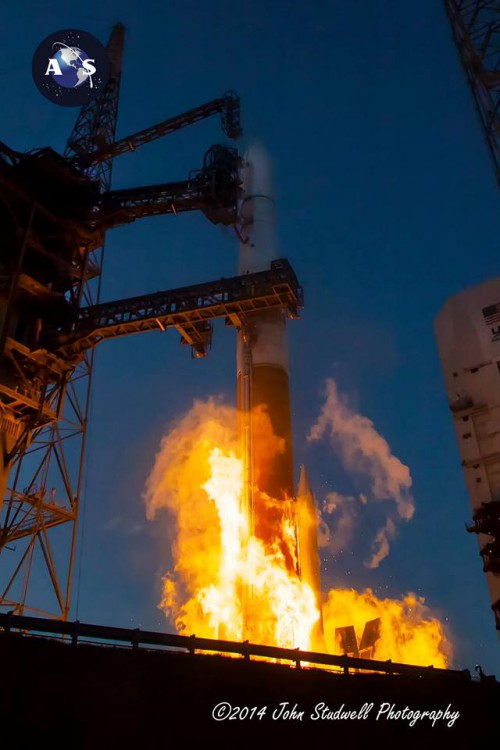
.
.
FOLLOW AmericaSpace on Facebook and Twitter!
.
.
Missions » GPS » GPS 3 »



